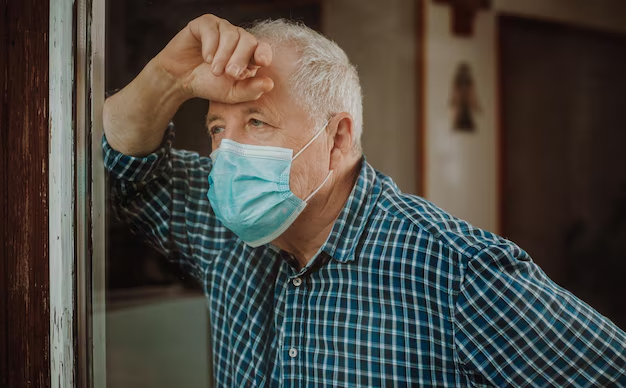Understanding the Causes of Parkinson's Disease: What You Need to Know
Delving into the complexities of Parkinson's disease can be both daunting and enlightening. If you're seeking to understand what causes this challenging condition, you are not alone. Millions around the world are affected by it, making the quest for answers both crucial and personal. In this article, we aim to unravel the possible causes of Parkinson's disease, providing insights into the factors involved and offering a clearer picture of this neurological enigma. By understanding these causes, those affected can navigate the disease with greater awareness and confidence.
What is Parkinson's Disease?
Before discussing the causes, let's establish what Parkinson's disease is. It is a progressive neurological disorder that primarily affects movement. Common symptoms include tremors, stiffness, slowness of movement, and balance difficulties. These symptoms result from the degeneration of nerve cells in a specific area of the brain called the substantia nigra, which leads to a deficiency of dopamine—a critical neurotransmitter in the brain.
Genetic Factors
The Role of Genetics in Parkinson's
One of the first areas scientists examine when seeking the causes of a disease is genetics. Parkinson’s disease is no exception, with research demonstrating some genetic predisposition to the condition. In recent years, scientists have identified several gene mutations directly linked to Parkinson’s.
- LRRK2 and Parkin genes: Mutations in these genes are known to cause familial Parkinson’s, which accounts for about 10-15% of all cases.
- Gene-gene interactions: Experts speculate that interactions between multiple genes may increase susceptibility to Parkinson's.
It is crucial to note that while genetics can play a significant role, having these mutations does not guarantee the development of the disease; it merely increases the risk.
Environmental Toxins
How Environmental Exposure Affects Parkinson's
Beyond genetics, environmental factors can significantly contribute to the development of Parkinson’s disease. Various environmental agents and occupational exposures have been studied:
- Pesticides and Herbicides: Exposure to these substances, often used in agriculture, has been associated with a higher risk of Parkinson's. Chemicals such as paraquat and rotenone are particularly implicated.
- Heavy Metals: Metals like lead and manganese can adversely affect neurological health. Living near industrial areas with heavy metal emissions may increase Parkinson's risk.
The link between environmental exposure and Parkinson's highlights the need for awareness and preventive measures, particularly for those in high-risk areas or occupations.
The Aging Factor
Aging as a Primary Risk Factor
Aging is one of the most significant risk factors for Parkinson’s disease. Most people with Parkinson's develop the disease around the age of 60 or older, though it can occur at younger ages in rarer cases (referred to as early-onset Parkinson’s).
- Cellular Aging: As cells age, their ability to fight off damage diminishes, which may contribute to the onset of Parkinson’s.
- Mitochondrial Dysfunction: Aging can impair the function of mitochondria, the cell's powerhouse, leading to an increased likelihood of neuronal death.
Understanding aging's role in Parkinson’s supports the development of age-targeted interventions and lifestyle adjustments to mitigate risk.
The Role of Neuroscience
Brain Changes in Parkinson's Disease
In Parkinson’s disease, understanding changes in the brain is vital. Research in neuroscience has uncovered several insights:
Dopaminergic Neuron Loss: The hallmark of Parkinson’s disease is the loss of dopamine-producing neurons. This loss disrupts the balance of neurotransmitters, leading to motor and non-motor symptoms.
Lewy Bodies: Abnormal aggregates of protein called Lewy bodies are found in the brains of Parkinson’s patients. While their exact role is unclear, they are integral to the disease process.
Alpha-synuclein: A protein found in Lewy bodies, its misfolding and accumulation are considered central in understanding Parkinson's pathology.
These neurological insights are crucial for developing potential treatments and understanding the progression of Parkinson’s disease.
Lifestyle and Health
Lifestyle Factors That May Influence Parkinson’s Disease
While genetics and environmental factors are largely beyond one's control, some lifestyle factors can be modified to potentially reduce Parkinson’s risk:
- Exercise: Regular physical activity has been shown to improve symptoms and possibly slow disease progression.
- Diet: A diet rich in fruits, vegetables, and omega-3 fatty acids can support brain health.
- Caffeine and Nicotine: Interestingly, some studies suggest a reduced risk of Parkinson's among coffee drinkers and smokers, though the detrimental health effects of smoking outweigh potential benefits.
Adopting a healthy lifestyle can not only aid in improving quality of life but may also serve as a protective factor against Parkinson’s disease.
Closing Thoughts
Parkinson’s disease is a multifaceted disorder with an intricate web of causes. From genetic predispositions and environmental exposures to aging and lifestyle choices, understanding the contributors to this condition requires a holistic approach. While no definitive prevention strategy exists, modern research continues to offer hope through new insights and potential interventions. By exploring these various angles, individuals affected by Parkinson’s can pursue informed strategies to manage their condition effectively.
Key Takeaways:
- 🧬 Genetic Predisposition: Certain gene mutations can increase the risk of Parkinson's.
- 🌿 Environmental Factors: Pesticide exposure and heavy metal toxicity are linked to a higher risk.
- 👵 Aging: The primary risk factor, often leading to cellular and mitochondrial dysfunction.
- 🧠 Neural Changes: Loss of dopaminergic neurons and the presence of Lewy bodies play a crucial role.
- 🏃♂️ Lifestyle Choices: Exercise and a healthy diet can potentially lower risk.
Understanding these elements effectively equips individuals with not just knowledge, but also the empowerment to live proactively in the face of Parkinson’s challenges.

Related Articles
- Are There Environmental Causes Of Parkinsons
- Can Alcohol Cause Parkinson's
- Can Concussions Cause Parkinson's
- Can Females Get Parkinson Disease
- Can Head Trauma Cause Parkinson's
- Can Parkinson Disease Cause Dizziness
- Can Parkinson's Affect Eyesight
- Can Parkinson's Affect Memory
- Can Parkinson's Affect Speech
- Can Parkinson's Affect Vision